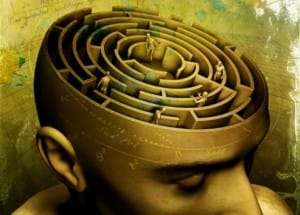
Throughout my medical experience, I have tried different approaches to help me heal. In particular, I have looked for two: cellular nourishment and detoxification at the physical level , and a “diet” of thoughts and emotions to help reduce stress.
After a while, when I had dealt with the mental and emotional patterns, I realised that I had not yet got to the bottom of the key issues.
This was due to a specific approach. I was mainly dealing with perceived stress or things I was familiar with. For example, with fears and with unpleasant emotions that were aroused in certain circumstances. But I did not deal with the things that cause internal stress (which I have already written about here).
Internal stress is based on unresolved conflicts

Internal stress is based on unresolved conflicts, traumatic memories and unpleasant experiences. It can also relate to family beliefs that we automatically picked up as children, mostly from our parents.
Over time, we have repeated them so many times that they can even become part of our personality, so we don’t see them as something foreign or distracting.
These unconscious programmes then influence key life choices, although most of the time we don’t even see the connection. For example, someone may have a very specific fear but not know where it comes from.
Alex Loyd, author of “The Healing Code”, told the story of a person who felt very bad whenever she noticed anything yellow in her surroundings. She later found out that she had experienced a traumatic event in her youth in which the colour yellow was present. Therefore, now, in all situations and circumstances where she encounters this colour, the same emotions that she experienced in the original situation surface.
This activates internal stress. Any perception, view of a situation, memory or even association that makes us feel uncomfortable may stem from a memory with which we associate fear. And every time we relive that fear, we add a new log to the fire of stress.
Because the processes are going on all the time, they are very well ingrained in all the pores of the subconscious. That is why it is difficult to get close to them with the usual techniques and procedures that come from the conscious mind. Dr. Lipton reiterates over and over again that the patterns, habits and beliefs that arise from the subconscious mind are a million times more powerful than conscious efforts and take place ninety-five percent of the time.
When I read these studies, I got to thinking.
I don’t know why, but I have never been attracted to dealing with family beliefs, youth memories and the rest of the past. But clearly the time has come.
How a child’s mind works

First, I read a few books that showed me the importance of resolving attitudes and, above all, family patterns. I learned that the transmission of beliefs, fears, world views and the like begins in the womb, where the child also receives a whole cocktail of chemical elements through the mother’s blood. These are secreted into his body according to his mother’s well-being. If the mother is anxious, for example, the foetus detects this.
The automatic transmission of unconscious beliefs from the environment to the child continues until around the age of 6. By then, the child’s brain functions quite differently from an adult’s. They operate exclusively on the delta and theta brain frequencies, while logical thinking takes place on the beta frequency. Therefore, children are not capable of forming their own opinions and making logical connections between facts, but merely take in information and interpret it simplistically.
For example, if a parent says to a child rolling on the floor in a shop, screaming for a new toy, “You don’t deserve that because you weren’t diligent”, the child doesn’t recognise the real reason why the parent said that to the child.
Although the adult immediately sees the connection between this phrase and the desire to make the child behave better, the child does not understand it in the same way as the parent: “I want to teach you and motivate you to be more diligent. Remember this advice and whenever a mischievous thing comes to your mind, remember that you will be wasting an opportunity for a new toy by doing it.”
A child’s brain is not capable of this kind of complex thinking, but registers only two pieces of information: ‘I am not diligent’ and ‘I do not deserve what I want’.
It is at this time that the mind is formed, and its function is primarily one of protection. The mind monitors the child’s experience of his surroundings and, depending on the emotions he expresses, assesses whether a situation is pleasant and consequently welcome, or whether it is unpleasant.
In the latter case, the mind will try to make sure that something similar does not happen again, to protect the person from feeling unwell and having problems. It will do this by preventing the person from getting into similar situations in every possible way. If the person does find himself in a similar situation, however, the mind will immediately activate unpleasant emotions designed to distract the person from the situation as quickly as possible.
The second principle by which the mind works is optimality. It wants to put as many things as possible in the same compartment so that it can treat them in the same way. As a result, it uses fewer resources than if it were to deal with each thing anew.
According to these two criteria, the mind is constantly monitoring developments and checking whether the current situation can be placed within a known framework. If it is possible, its task with regard to this situation is done and it can shift its attention back to monitoring what is happening.
Unfortunately, the mind does not have a mechanism or filter to separate such classifications on the basis of whether a belief or action harms or benefits a person in the long run. For example, if a child reaches his hand towards a hot plate on the stove, the mind registers the event and makes sure that it does not happen again. For example, by activating a sense of fear when the person is near the stove. In this case, the mind’s reaction is useful and very welcome.
When a child hears “You don’t deserve this”, the mind works in a similar way. It senses that the child has experienced pain and wants to protect the child from the same emotions. It will put the situation in the “Unwanted” box and then react protectively to anything that happens in the future that smells similar.
What does this look like in practice? The mind will use every possible circumstance to prevent that person from getting into a situation where he or she is wishing for something and trying to make it happen. The mind perceives these circumstances as a prelude to pain, which it wants to protect the person from.
Unconscious programmes guide us through life

What does this mean for the child when he grows up? When overwhelmed by the desire for some achievement or progress, the mind will find a way to dissipate the strong desire. For example, a voice in that person’s head will say “You can’t achieve that”, “You’re too young”, “You’re not educated enough”, “You don’t deserve it”, and so on. Or the mind will directly sabotage the fulfilment of the wish or create insurmountable circumstances for its fulfilment. In short, it will create a myriad of obstacles that will prevent a person from succeeding.
Some classic examples of unconscious blockages that have stifled people’s development and achievement of their goals are also given by Alex Loyd and Ben Johnson in their book “The Healing Code”.
One of the more picturesque stories is about an educated lady who was predicted to be a big success on Wall Street. She graduated with honours from an eminent university, her IQ was 180 and even the media reported on her. Experts predicted a bright future for her, as all indicators revealed her above-average potential. But success was not to be. In every new opportunity, she did something wrong, no matter how hard she tried and how much she wanted to succeed.
Loyd used a special process to confront her with her youthful memories. She realised that she first experienced emotions similar to those she felt when she failed at around the age of five. It was a beautiful day and lunchtime. Her sister had already eaten it and her mother had given her ice cream. When she wanted some, her mother refused, saying that she should eat her lunch first and then she would get it.
That was all; the main and only cause of her later blockages and problems. No drama, no trauma, no punishment… Just an ordinary sentence, but one that the girl’s mind understood and accepted in its own way.
The experience was really nothing special, or rather quite ordinary – as long as we see it through adult eyes. But the girl perceived the situation differently at the time, something like this: “If my sister got ice-cream and I didn’t, it means that my mother prefers her. So there is something wrong with me or I am worse than the others. And if I am worse, it will show in life. The way my mother treats me, people will treat me. If they are going to like me, they are not going to be sincere about it, because if anyone should like me and like me, it is my mother – who has just revealed how she feels about me.”
Of course, the girl did not realise this consciously, but forgot it all in a few minutes. But somewhere in her subconscious, a specific belief was formed, which was activated again and again later in life, when she wanted to achieve something more.
After reprogramming this unconscious programme, everything fell into place. Our Lady has finally achieved the success she had hoped for.
The power of unconscious beliefs

This story shows the extraordinary power of unconscious beliefs acquired at an early age. Since their aim is to protect the individual in the event of danger, they are also safely tucked away in special compartments that are not easily accessible. This is the main reason why we cannot resolve these kinds of programmes with affirmations and similar techniques that do not go deep enough.
But sooner or later, there comes a time when many of them have to change. They protect us while we are children. Once we develop the ability to think in complex ways, they become a hindrance. Unfortunately, the body’s intelligence has no mechanism to separate necessary programmes from those that no longer serve us. If not taken up by the individual, these primal patterns, which were created to protect him or her in the first years of life, guide him or her practically from birth to death. In other words, such a person is more or less just repeating the patterns of his parents.
Dr Lipton gave a remarkable example of how powerful such unconscious beliefs really are. If a family with a history of cancer adopts a child from a family with no history of the disease, the child has exactly the same chance of getting cancer as a blood child of that family. This means that when an adoptee adopts the beliefs of his or her new family, he or she also takes on the family’s illnesses.
These stories gave me the necessary fuel to dig deeper into my roots.
To be continued in the next article.
This article is based on the book “The Big Ugly Crisis”, by Boris Vene and Nikola Grubiša.
